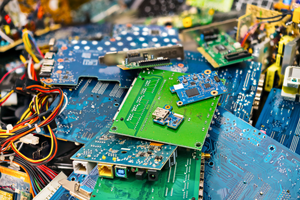New Delhi: As the government doubles down on making India a global manufacturing hub, the demand for electronics components and sub-assemblies is likely to scale to $240 billion by 2030, paving the way for $500 billion worth of electronics production goal while creating at least 2.8 lakhs new jobs by 2026, a report showed on Sunday.
Priority components and sub-assemblies including PCBAs, are projected to grow at a robust CAGR of 30 per cent, reaching $139 billion by 2030, according to the report by the Confederation of Indian Industry (CII), which suggested key recommendations to craft a scheme to further help the industry.
Last year, the demand for components and sub-assemblies stood at $45.5 billion to support $102 billion worth of electronics production.
The report identified five priority components/sub-assemblies of batteries (lithium-ion), camera modules, mechanicals (enclosures etc.), displays and PCBs, which are categorised as high priority for India.
They cumulatively accounted for 43 per cent of the components demand in 2022 and is expected to grow to $51.6 billion by 2030, the report mentioned.
These components have either a nominal production in India or are heavily import-dependent.
“Similarly, PCBA is a high potential category for India since most of the demand is met by imports. This segment is expected to grow by 30 per cent, leading to a demand creation of $87.46 billion by 2030,” the report noted.
The report recommended crafting a scheme aimed at providing fiscal support for select components and sub-assemblies in the range of 6-8 per cent.
“The fiscal support is to be extended for a period of 6 to 8 years to ensure adequate time for scaling up and enhancement in value addition,” it added.
Additionally, the Scheme for Promotion of Manufacturing of Electronic Components and Semiconductors (SPECS) 2.0 should be introduced with subsidy support ranging from 25 per cent to 40 per cent to support potential investors across brownfield and greenfield categories.
“The import tariffs on priority sub-assemblies and components like camera modules, display modules, mechanicals, need to be urgently rationalised in line with key competing economies,” added the CII report.
“The creation of export demand for India-made products have the twin advantages of increasing export volumes and helping boost domestic manufacturing of components and sub-assemblies,” according to the CII.
The policy support will help in various economic benefits arising from the development of the components and sub-assemblies ecosystem in India.
–IANS


Comments are closed.